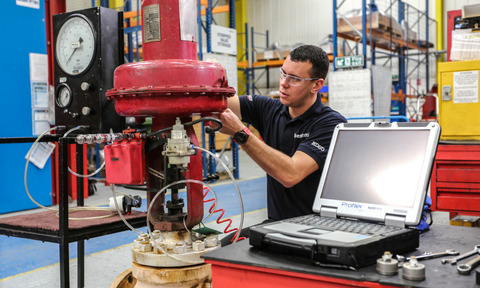Kent Introl’s OEM valve diagnostics service benefits major European oil refinery
31 May 2018

A leading European oil refinery had suffered long term operational issues with a poorly performing valve following overhauls by a third party service provider.
Its internals were lasting only for periods of around three months and required frequent maintenance. Within three months of the valve being returned to service, problems would occur and the unit would require further maintenance and the issue had been ongoing for years.
The company asked Kent Introl to undertake a full control valve diagnostics and upgrade project. A full functional test of the valve was undertaken with the contractor’s diagnostics equipment, the Profiler.
The Profiler is used to detect and document a number of issues with valve and actuator performance such as actuator operational pressures, assembly frictional levels, seat angles, calibration issues and air leaks plus other information.
Kent Introl profiled the valve while in situ and temporally bypassed. It had been seizing in position due to a build-up of crystalline salt between the plug and the guide.
After six months of service, it continued to perform perfectly with no unplanned outages, performing twice as long as ever before
The Profiler confirmed the additional load generated within the trim as a result of this buildup. The process medium is highly toxic so traditional intrusive maintenance methodology was not an option. An upgraded trim design was required which mitigated the areas in which the salts could form.
Diagnostics testing and findings
Three tests were performed: profile, resolution and the sensitivity test. The first diagnostics testing was completed when the valve was in service and performing badly – testing was also undertaken for three other stages: namely, ‘as returned to shop’, ‘as overhauled’ and ‘as returned to service’.
The Profiler confirmed that the positioner calibration was out and there were high levels of stiction. These results validated that the valve required an overhaul and trim replacement.
The valve was then taken out of line and shipped to Kent Introl for upgrade. Another profile check was made to compare with the initial on-site report, before the overhaul and upgrade. There was then a third diagnostics test carried out, which confirmed the valve was now fit for purpose.
After returning to service the valve underwent its final diagnostics check. Following six months of service, it continued to perform perfectly with no unplanned outages, performing twice as long as ever before with no issues to report.

